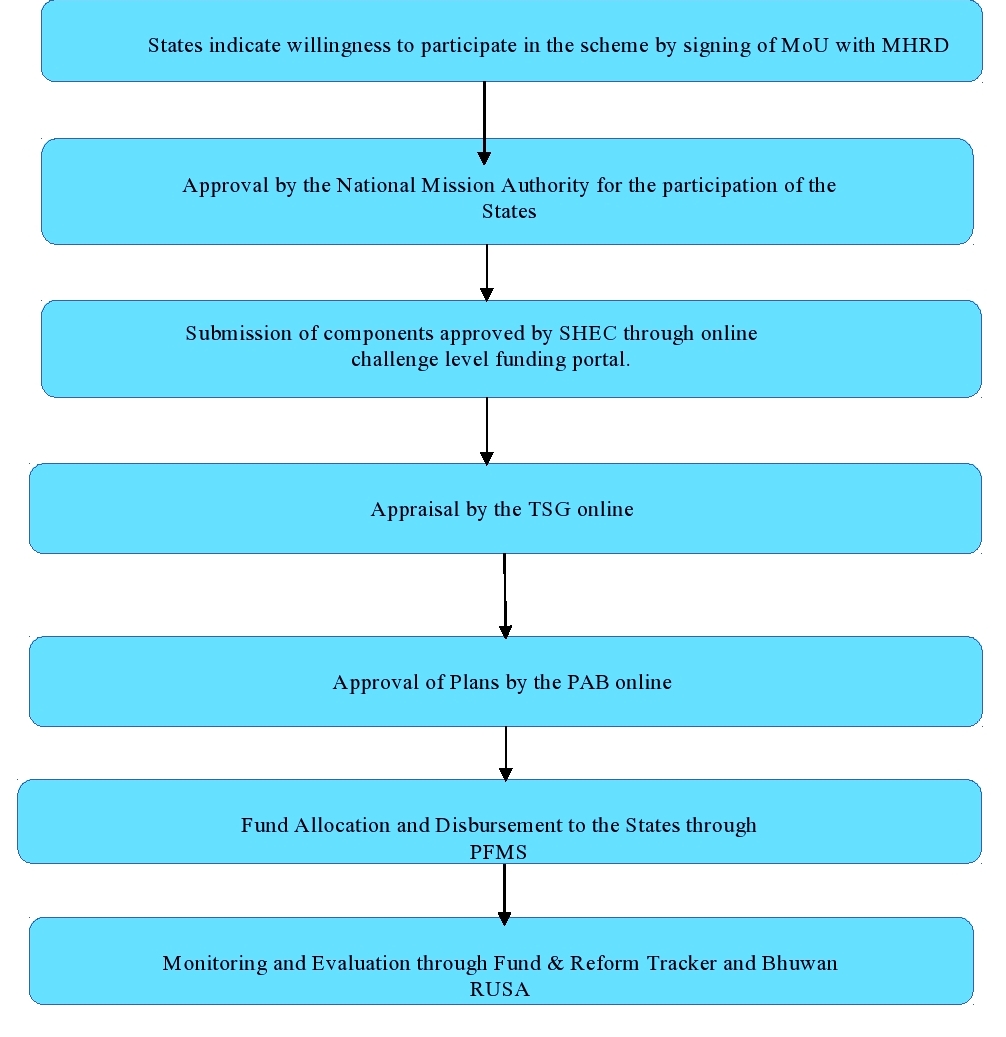Overview
Knowledge development is an essential factor for the growth of civilization and a country. Thus, the Government of India has introduced RUSA (Rashtriya Uchchatar Shiksha Abhiyan) in 2013, a Centrally Sponsored Scheme (CSS), which provide best quality higher education to its institutions and people. The funding would be beneficial towards the development of an institution, improving the higher education and helps to resolve the issues concerning with learning quality, teaching value and relates.
Objectives of RUSA
To improve the quality of education at world class level. Towards the development of institutional infrastructure with world class facilities. To reform the Universities academic and examinations structure with modern technology. Creating a Research and Innovation environment in Alagappa University. To achieve a higher ranking in NAAC, NIRF, etc.
Structure of RUSA
RUSA, for its effective implementation has come up with a participative and inclusive institutional structure encompassing all the stake holders at central and State level. The structure aims at in- depth involvement of the institutions at grass root level. The structure as envisaged by RUSA is as mentioned.
1. Central Level
-
 National Mission Authority
National Mission Authority -
 Project Approval Board
Project Approval Board -
 National Project Directorate
National Project Directorate -
 Technical Support Group/ RUSA Resource Centre.
Technical Support Group/ RUSA Resource Centre.
2. State Level
-
 State Higher Education Council
State Higher Education Council -
 State Project Directorate
State Project Directorate -
 State Technical Support Group
State Technical Support Group
3. Institutional Level
 Universities
Universities
Board of Governors
COMPOSITION
The BoG is a 10- 15-member body chaired by an eminent individual. The Chairman need not be an academic but must have prior experience in a similar capacity. The board members must comprise eminent individuals from the institutions itself, State government, society, industry as well as the academia.
FUNCTIONS
Form, supervise and -guide various Committees required for project implementation and internal project monitoring
Project Monitoring Units
COMPOSITION
Representative from academic officials of the Institution, faculty, senior administrative officers, technical and non-technical support staff and students.
FUNCTIONS
Responsible for monitoring of the project at the institutional level in order to implement the governance reforms proposed under RUSA.
The process flow of RUSA is given below:
Process Flow under RUSA
RUSA follows a bottom-up approach for planning and budgeting to address multiple and graded inequalities and promote need-based planning.

RUSA 2.0 Targets
-
 State Higher Education Council
State Higher Education Council -
 State Project Directorate
State Project Directorate -
 State Technical Support Group
State Technical Support Group -
 Increase the spending of States on higher education as a % of GSDP to 2% or above.
Increase the spending of States on higher education as a % of GSDP to 2% or above. -
 Ensure all the State Institutions are NAAC Accredited by the end of March 2020 as a part of mandatory quality assurance framework.
Ensure all the State Institutions are NAAC Accredited by the end of March 2020 as a part of mandatory quality assurance framework. -
 Reduce the student-teacher ratio to 15:1 in Institutions by the end of March 2020 Increasing the National GER to 32% by March 2022
Reduce the student-teacher ratio to 15:1 in Institutions by the end of March 2020 Increasing the National GER to 32% by March 2022 -
 Ensure growth of GER with more inclusion of disadvantaged groups (SC/ST/Women) Ensure that all the States participate in AISHE and data pertaining to all State institutions is furnished.
Ensure growth of GER with more inclusion of disadvantaged groups (SC/ST/Women) Ensure that all the States participate in AISHE and data pertaining to all State institutions is furnished. -
 Ensure that the number of colleges affiliated to State Universities reduce to 200.
Ensure that the number of colleges affiliated to State Universities reduce to 200.